

10 Great Movie Speeches for Teaching Rhetoric

Rhetoric can be difficult for students. Heavy speeches often scare students away from enjoying the beauty of rhetoric. Using movie speeches as an introduction to rhetoric is a great alternative to starting with the historic staples. Students do not have to have a working knowledge of these movies in order to analyze them for rhetoric. All of these speeches can be found HERE . This site is my favorite to use because it has a transcript for each speech below the movie clips, which makes it easy for students to analyze the rhetoric after they watch the speeches. Plus, it’s a one stop site. All the speeches you need are in one place.
Are you looking for a great activity to use in your own classroom with movie speeches? Click on the graphic below for my Movie Speech Rhetorical Analysis Resource.

Coach Brooks Addresses the US Hockey Team
“miracle” 2004.
Powerful sports speeches are always a great asset to rhetoric units. Heavy with pathos, this speech uses repetition and anastrophe to grab the attention of the players before they begin an Olympic championship. Students love the emotion of the speech. It’s a great starting speech because the elements are easy to identify.
Oscar Schindler’s Departure Speech
“schindler’s list” 1993.
Oscar Schindler addresses his factory workers and Nazi guards on the eve of the end of the war. His speech is addressed to two groups separately: his factory workers and the Nazi guards. Addressing the workers, Schindler uses parallel structure and antithesis to express his thoughts on their freedom and his guilt. He then turns to the guards and uses antithesis one more time to urge them to do what is right. Moving and emotional, this speech uses a combination of pathos and logos. It takes a little background knowledge for students to understand this one, but it’s worth the time spent.
Lieutenant Colonel Hal Moore Addresses the 7th Calvary
“we were soldiers” 2002.
A list of great movie speeches can’t be complete without a moving battle speech. Almost verbatim from the actual historical speech, Moore’s speech serves as a powerful reminder of universal equality regardless of race or religion. Moore creates a sense of unity among his troops as he promises to fight along side of them throughout the battle.
Mia’s Decision to Become a Princess
“princess diaries” 2001.
An unlikely addition to this list, Mia’s speech is a powerful reminder that sometimes having a platform is all it takes to make a difference in the world. Mia uses rhetorical questions to build her argument as to why she has decided to accept her role as princess. This addition is the result of years of student suggestions for it’s inclusion. I relented and I’m so glad that I did.
President Whitmore Addresses Fighter Pilots
“independence day” 1996.
Aliens and fighter planes grab the attention of students in this inspirational fight speech from the 1996 version of “Independence Day.” President Whitmore uses the holiday to invoke feelings of unity among the fighter pilots and continues his argument by using parallel structure and allusions. If these were to be voted upon, this speech would come out as the collective favorite in my classroom for the past ten years.
T errance Mann- People Will Come
“field of dreams” 1989.
Yes, another sports movie. It’s worth it. I promise. Terrance Mann explains why people will come to Ray’s outrageous dream of a field by using emotion, logic, and hyperbole. His image of what will be stirs both Ray and us to believe that the field will be worth the price.
Harvey Milk’s Address at the Gay Freedom Parade
“milk” 2008.
Students LOVE this speech. An unknown among students, this short speech uses parallel structure, allusion, and pathos to remind the audience that equality does not have one face. If you have not used “Milk” in your classroom for other projects, you need to discover the many uses of this phenomenal film.
Peace by Inches Speech
“on any given sunday” 1999.
Disclaimer: Stong Language (but still PG-13)
This speech deserves a place in this list because of the unlikely inspiration tactics used by coach D’Amato. Most students peg this speech for pathos as first, but upon closer inspection realize that it is logos to the core. He uses the analogy of life as a football game because, after all, “in either game, life or football, the margin for error is so small.” Students love that line. And, frankly, so do I.
Gettysburg Speech
“remember the titans” 2000.
Sometimes is takes a little bit of history to understand today. This rallying speech reminds the players of a recently desegregated team that there are many who died to get them where they are. I find that year after year, my students still know and love this movie- especially my football players! Coach Boone uses a combination of logic and emotion to change the outlook of the players who go on to unite as a team.
The Cowardly Lion on Courage
“the wizard of oz” 1939.
What makes a king out of a slave? COURAGE! This fun and playful speech on courage uses rhetorical questions coupled with parallel structure to reinforce the idea that courage is what makes one great and that courage is what the Cowardly Lion is lacking. Students love the whimsical nature of this speech and are drawn into the rhythm of the language.
Share this:
Published by Modern ELA Materials
Nicole Brown is a content creator and secondary ELA Teacher in East Tennessee. She has been teaching and creating for over twenty years. You can reach her at [email protected]. View all posts by Modern ELA Materials
Leave a comment Cancel reply

- Already have a WordPress.com account? Log in now.
- Subscribe Subscribed
- Copy shortlink
- Report this content
- View post in Reader
- Manage subscriptions
- Collapse this bar

My Favorite Speeches for Rhetorical Analysis: 10 Speeches for Middle School ELA and High School English
Teaching rhetorical analysis is one of my absolute favorite units to complete with my students. I love teaching my students about rhetorical strategies and devices, analyzing what makes an effective and persuasive argument, and reading critical speeches with my students. Here is a quick list of some of my favorite speeches for rhetorical analysis.
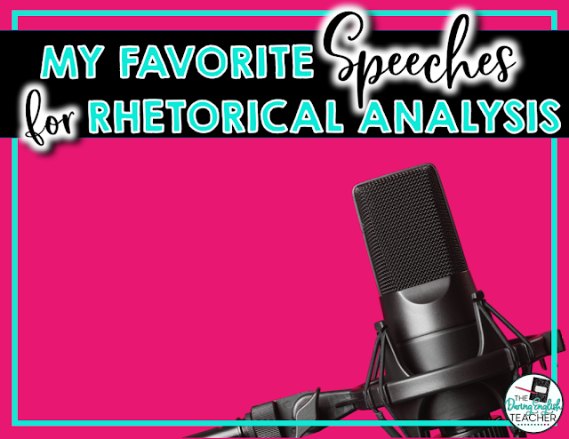
I absolutely LOVE teaching rhetorical analysis. I think it might be one of my favorite units to teach to my high school students. There are just so many different text options to choose from. Here is a list of some of my favorite speeches to include in my rhetorical analysis teaching unit.
10 Speeches for Teaching Rhetorical Analysis
1. the gettysburg address (abraham lincoln).

Some notable things to mention in this speech include allusion and parallel structure. To make your analysis more meaningful, point out these devices to students and explain how these devices enhance the meaning of the text.
Teaching Resource : The Gettysburg Address Rhetorical Analysis Activity Packet
2. Lou Gehrig’s Farewell Speech (Lou Gehrig)
This speech is one that many of my athletes love to analyze, and it is an excellent exemplar text to teach pathos. And like The Gettysburg Address, it is short. This is another speech that you can read, analyze, and even write about in one class period.
When I use this speech in my class, I have students look for examples of pathos. Mainly, I have them look at word choice, tone, and mood. How does Lou Gehrig’s choice of words affect his tone and the overall mood of the speech?
3. I Have a Dream (Martin Luther King, Jr.)

In the classroom, it is important to point out the sermonic feel to the speech and also to have your students look for calls to action and pathos. Have your students look for tone, allusions, and word choice to help them notice these rhetoric expressions throughout it.
Teaching Resource : I Have a Dream Close Read and Rhetorical Analysis
4. Speech at the March on Washington (Josephine Baker)
This is another important speech that held a lot of importance for the changes that needed to be made in America. The speech is a shorter one, so in the classroom, it will not take as long to analyze it, and students can understand the significance of the use of rhetoric in a shorter amount of time than some other speeches.
When teaching this speech, I like to remind my students to search for devices that portray an excellent example of the pathos that is so present in this speech. Some of these devices could be mood, repetition, and diction.
5. Steve Jobs’ Commencement Speech (Steve Jobs)

In class, it is good to have your students annotate and analyze the speech just as they have done for the others. The organization of the speech will help them to notice the similarities and differences between each point Jobs makes.
6. Space Shuttle Challenger (Ronald Reagan)
This speech represents a strong sense of pathos as a movement to help the American people cope with loss after the deaths of the astronauts aboard the Challenger. It is another speech that is not too long, so it should not take a long time to both analyze and annotate the entire speech.
When teaching this speech in class, be sure to mention how pathos is the driving force behind the speech, through the tone and the diction. How does Reagan use emotion to focus on the astronauts as humans, rather than solely focusing on the tragedy?
7. The Perils of Indifference (Elie Wiesel)
This speech is a good one to teach because it both makes students question their own lives, but also how the world works. The speech relies on pathos, and a little ethos too, to get the audience to feel the full effect of the tragedy of the Holocaust and what the speaker went through. It is a long speech so it may take longer for the students to fully grasp all the details that make it such a persuasive speech.
When I teach this speech, I like to have students annotate every place they notice an example of pathos, and then have them explain why in their annotations this makes them feel an emotion. The same with the ethos, and then we can further analyze the rest together.
8. 9/11 Address to the Nation (George W. Bush)
This speech shows another example of the use of pathos in the midst of a tragedy. The President wanted to show the American people how much he was feeling for those lost in the tragedy of 9/11. It is not a long speech, but the amount of emotion within the words is significant for students to notice.
When teaching this speech, it is essential that students look very closely at each part of it, noticing each piece that reveals tone, mood, and other literary devices. How do the different devices add to the pathos of the speech?
FREE TEACHING ACTIVITY : September 11 Address to the Nation Sampler
Teaching Resource : September 11 Address to the Nation Rhetorical Analysis Unit
9. We are Virginia Tech (Nikki Giovanni)
This speech is probably the shortest speech on this list but provides one of the most emotional and pathos-filled rhetoric. This describes another tragedy that is spoken about with pathos to give the audience a safe feeling after such an emotional thing. Students can spend time analyzing the different devices that make the piece so strong in its emotion.
In the classroom, make sure your students make a note of the repetition, and what that does for the speech. Does it make the emotion more impactful? How does it make the audience feel like they are a part of something bigger?
10. Woman’s Right to the Suffrage (Susan B. Anthony)
This is another short speech that holds a lot of power within it. A lot of students will enjoy reading this to see how much the country has changed, and how this speech may have some part in influencing this change. It is a great speech to help teach logos in the classroom, and it will not take a long time to analyze.
Make sure your students notice, and they also understand, the use of allusions within the speech. These allusions help to establish the use of logos, as Anthony wants the use of American historical documents to show how logical her argument is.
Ready-For-You Rhetorical Analysis Teaching Unit

You might also be interested in my blog post about 15 rhetorical analysis questions to ask your students.
Teaching rhetorical analysis and speeches in the classroom is a great way to teach informational text reading standards.
Rhetorical Analysis Teaching Resources:
These resources follow reading standards for informational text and are ideal for secondary ELA teachers.
- Rhetorical Analysis Unit with Sticky Notes
- Ethos, Pathos, Logos: Understanding Rhetorical Appeals\
- Rhetorical Analysis Mini Flip Book
Join the Daring English Teacher community!
Subscribe to receive freebies, teaching ideas, and my latest content by email.
I won’t send you spam. Unsubscribe at any time.
Built with ConvertKit
Leave a Reply Cancel reply
Your email address will not be published. Required fields are marked *
Save my name, email, and website in this browser for the next time I comment.
Leave this field empty

SUBSCRIBE NOW

VisualStory®
- Duarte DataStory®
- Presentation Principles™
Slide:ology®
- Slide Design
Speaker Coaching
- Presenting Virtually™
- Illuminate™
- Adaptive Listening™
- Team training
- Learning journeys
- Brand and product storytelling
- Keynotes and events
- Sales enablement
- Communication systems
- Accelerator Lab™
- Our culture
- Our leaders
- Case studies
- Media mentions
- Guides and tools
- Learner support
The most powerful techniques for speaking I learned from movie speeches

Alexa Harrison
If I asked you to quote a line from one of the most inspirational speeches you know off the top of your head, there’s a chance you’d recite something by a political or Civil Rights leader, like John F. Kennedy, Jr. or Dr. Martin Luther King, Jr. But, it’s more likely you’d give me lines from movie speeches, like Dory from Finding Nemo’s “Just keep swimming!” or the legendary quote from Braveheart’s William Wallace “Every man dies. Not every man really lives.”
Movie speeches have a way of seeping into our collective consciousness as a society, and people often quote recognizable snippets from cinema in conversation in order to sum up their feelings or provide relatable wisdom in a variety of contexts. ( “There’s no place like home!” )
When a screenwriter really nails inspiring monologue in movie speeches, it can be incredibly powerful — resulting in both a speech that makes an indelible mark on pop culture and a movie character that becomes the stuff of legends.
But what ultimately makes the difference between movie speeches that have a lasting impact, and ones that we forget as soon as we leave the movie theater? The answer is: Persuasive presentation techniques.
When movie speeches rely on tried and true tools for persuasive public speaking, they are able to deliver rousing messages that inspire both the characters they’re speaking to onscreen and those of us watching offscreen.
Public speaking tips from the movies
Let’s take a look at three particularly powerful movie speeches to see how the persuasive presentation techniques their speakers use make them effective — and unforgettable.

John Keating in Dead Poets Society , “ Carpe Diem ”
When Dead Poets Society was released in 1989, it was a box office success . The quintessential prep school movie landed so well because it tells a relatable story of friendship, it’s set at Welton Academy, a ‘50s romanticized boarding school, and it’s centered on a beloved, eloquent, hero-like English teacher: John Keating, played by Robin Williams.
Keating isn’t just adored by characters in the movie. He’s also a source of inspiration for hordes of real-life teachers. In fact, many teachers experienced serious grief over Keating when Williams passed away in 2014. Lucy Townsend of the BBC explains: “Keating enthuses his pupils about the power of English Literature and encourages them to follow their dreams. It’s Hollywood’s damp-eyed paean to the ability of teachers to inspire young people. Thus the response to Williams’s death from teachers.”
Keating is legendary because he represents an ideal mentor figure, who is equal parts fun and scholarly and nurturing and inspiring. But, he’s also iconic because of his ability to deliver a powerful speech — particularly the “Carpe Diem” lecture he gives on the first day of class.
During the lecture, Keating encourages the boys to take advantage of their time at Welton and seize all of the opportunities available to them. He shows them black and white photos of former students, reminding them that those students are now dead, “fertilizing daffodils,” and that their time here is also limited.
What makes Keating’s lecture so powerful is that he effectively creates common ground with the students to make his message feel relevant and meaningful. Creating common ground in a speech allows you to articulate common experience and, in turn, build credibility.
Keating himself is a Welton alum, so his description of being in school is inherently relatable for the boys. However, he is able to further strengthen his lesson by speaking from the perspective of the figures in the photos, who also went through an experience at Welton Academy, and, thus, whose wisdom is trustworthy.
Ultimately, when Keating delivers his famous closing lines:
“If you listen real close, you can hear them whisper their legacy to you…Listen, you hear it? ‘Carpe diem. Seize the day, boys. Make your lives extraordinary.’”
The students know that the advice is relevant and coming from a source that is credible.

Erin Brokovich in Erin Brokovich , “ Lame Ass Offer ”
Erin Brokovich is a fictionalized version of the real story of Erin Brokovich : An intrepid legal clerk and activist who fought the Pacific Gas and Electric Company after they contaminated the groundwater of Hinkley, CA with hexavalent chromium and made citizens sick.
In the movie, Brokovich completely dedicates herself to bringing justice to the people suffering in Hinkley, becoming tough and relentless in her pursuit of compensation for the little people that were made sick by a big corporation.
One of Erin Brokovich’s most powerful moments comes in a meeting between Brokovich and the utility company’s lawyers, when Brokovich delivers a wallop of a speech in response to the paltry amount the company initially offers victims as a settlement.
Brokovich implores:
“These people don’t dream about being rich. They dream about being able to watch their kids swim in a pool without worrying they’ll have to have a hysterectomy at the age of 20, like Rosa Diaz — a client of ours — or have their spine deteriorate like Stan Bloom. Another client of ours.
So before you come back here with another lame-ass offer, I want you to think real hard about what your spine is worth, Mr. Walker — or what you’d expect someone to pay you for your uterus, Miss Sanchez — then you take out your calculator and multiply that number by a hundred.”
Rather than attempt to appeal to the lawyers’ rational minds in her speech, Brokovich turns away from logic and attempts to generate emotion in order to spur empathy for the victims and win them a bigger settlement.
Stirring emotion in a speech is key to changing minds, since speakers who can evoke emotion can also generate empathy. Neuroscientist Richard Lopez explains, when people feel emotion, “empathy is possible because when we see another person experiencing an emotion, we ‘simulate’ or represent that same emotion in ourselves so we can know firsthand what it feels like.” Empathy is directly linked to helping behaviors in people — so listeners who empathize with speakers are more likely to help them achieve their goals.
By telling graphic stories about the people suffering in Hinkley and asking the lawyers to imagine the same things happening to them, Brokovich upsets the people listening, then she asks them to show compassion and understanding. This persuasive technique gets the lawyers to feel something about the situation, with the hope that they’ll ultimately choose to take a different action.

Rocky Balboa in Rocky VI , “ The World Ain’t All Sunshine and Rainbows ”
In the sixth installment of the inspiring boxing movie, Rocky Balboa , the legendary boxer proves that he’s not only a fighter for the ages, but also a speaker, too.
In the movie, Balboa is over 60 years old, and he has a 30-something-year-old son, Rocky Jr., who is working in the corporate world, but struggling to turn his life into a success. Rocky Jr. looks to blame everyone else in his life for his failures (including his dad) and he doesn’t realize that he must shift his attention inward to set his course straight.
In order to help his son, Balboa delivers him an inspirational pep talk. The speech works: It moves his son, and it’s often considered one of the most moving and memorable scenes of the entire series.
Why does Balboa’s speech land so well? Because he lays out the path to success in narrative form for his son, and he places his son at the center of that narrative — as the hero .
He starts describing his son’s idyllic childhood and how it devolved, then explains,
“Let me tell you something you already know. The world ain’t all sunshine and rainbows. It’s a very mean and nasty place, and I don’t care how tough you are, it will beat you to your knees and keep you there permanently if you let it. You, me, or nobody is gonna hit as hard as life. But it ain’t about how hard you hit, it’s about how hard you can get hit and keep moving forward. How much you can take and keep moving forward. That’s how winning is done! Now if you know what you’re worth, then go out and get what you’re worth!”
Placing your audience as the hero of the story you’re telling makes that story relevant and meaningful. It inspires people to heed your advice because they can see where they’ll end up if they do. As Chad Hodge explains in the Harvard Business Review , when you speak, try to “help people to see themselves as the hero of the story … Everyone wants to be a star, or at least to feel that the story is talking to or about him personally.”
If you need to deliver a speech that changes minds, sways hearts, and spurs action, and you’re feeling stuck, head to the movies. Thanks to great screenwriters, the best movie speeches have a way of using just the right speaking tools to deliver talks that are rousing and impactful. You may leave inspired to write a talk that your listeners will quote for years to come.
May the Force be with you!

Illustrated by Noah Smith.
Check out these related courses
Captivate™
Improve your public speaking
Overcome bad habits, conquer fears, and increase your confidence in any speaking setting. Discover your strengths and build on them to improve your delivery.
Structure and storyboard a talk
Analyze your audience and organize your ideas into a story structure that will move them. Transform content into visual concepts and build a storyboard for your presentation.
Personalized help for speakers
Up-level your speaking skills with one-on-one support. We’ll help you rehearse your talk, polish your presence, and transform your message delivery.
Craft a persuasive talk
Learn how the world’s greatest speakers use story to persuade. Develop a story structure that powerfully expresses your ideas, applying the principles of empathy, contrast, and variety.
Presentation Principles™
Learn presentation basics
Follow a step-by-step method to write compelling stories, amplify ideas visually, and present with confidence while learning at your own pace.
Turn ideas into visuals
Use visual thinking and design principles to transform information into effective and memorable graphics for presentations.
Create “skimmable” documents
Build helpful pre-reads and impactful leave-behinds with presentation software to support knowledge sharing and decision-making.
Check out these related resources

11 audience engagement strategies for all presentations
Need help keeping your audience engaged? It could be your presentation structure, delivery, or both! Dive into these strategies to keep your audience engaged the entire time you take the stage.
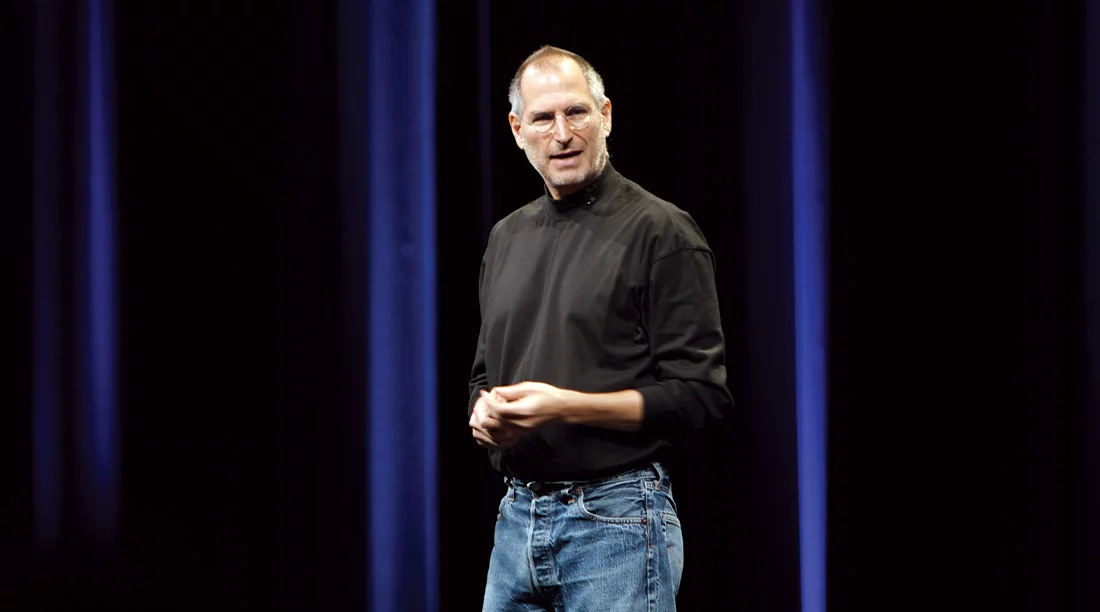
17 rhetorical devices that will make you sound like Steve Jobs
Want to communicate like Steve Jobs? Join us in an analysis of one of his most famous speeches and how he employed rhetorical devices to make it memorable and moving.

The ultimate guide to contrast: What your presentation is missing
Need to deliver a great presentation? Master the art of contrast to make sure it’s unforgettable and met with success, every time.

The secret to writing a call to action in a persuasive speech
Struggling to write a call-to-action for your speech or presentation? Make sure you address the 4 audience types so your CTAs are met with success.

Everything you need to know about using speaker notes in PowerPoint®
Learn all the Powerpoint hacks with speaker notes from an expert presentation designer. Easily design and prepare for your next presentation with ease.

How to make a great impression when speaking to senior leadership
Need exec buy-in? Learn 5 easy tips on how to present to executives and get your initiatives approved for success.
America Ferrera's Glorious 'Barbie' Monologue Explained
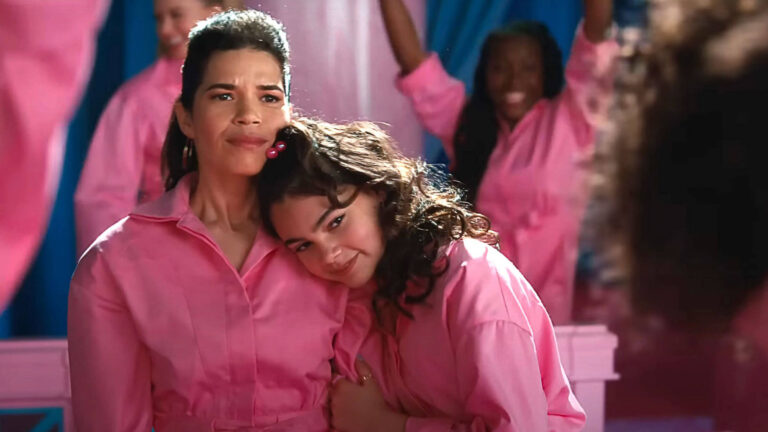
Usually, monologues are frowned upon in movies. If they are included in a script, they often end up on the cutting room floor because screen time is just so precious. But the famous Barbie monologue , delivered by Gloria (America Ferrera) in Act 3, resonates so powerfully that audiences are both emotional and empowered!
While the monologue (from the screenplay written by Greta Gerwig and Noah Baumbach, with input from Ferrera) feels like the unexpressed voice of millions of women, it also pulls various elements of the story together in a coherent, strategic way: theme: check. Spine of the film: check. Empowering message: check. Rally cry for the protagonist: double check!!
Let’s take a look at the Barbie monologue and explore how a well-crafted monologue can drive the narrative forward and sharpen a story.
Read More: 10 Most Thought-Provoking Villain Monologues

Theme vs. Spine
Most of us know what theme is (that thing we had to write essays about in high school when we read books like Catcher in the Rye ), it’s basically the underlying message or reason why the story is being told. Most movies have multiple themes and they are usually presented either as a statement to be disproved or a question to be answered.
In Barbie , some of the themes include self-acceptance, unrealistic expectations, idealized femininity, male vs. female roles in society, and consumerism to name a few. These themes are most clearly expressed when Barbie leaves Barbie Land, goes to the Real World, and heartbreakingly discovers that men rule society (unlike Barbie Land) and most girls shockingly abandon their Barbie dolls at a young age, making Barbie irrelevant to teen and adult women.
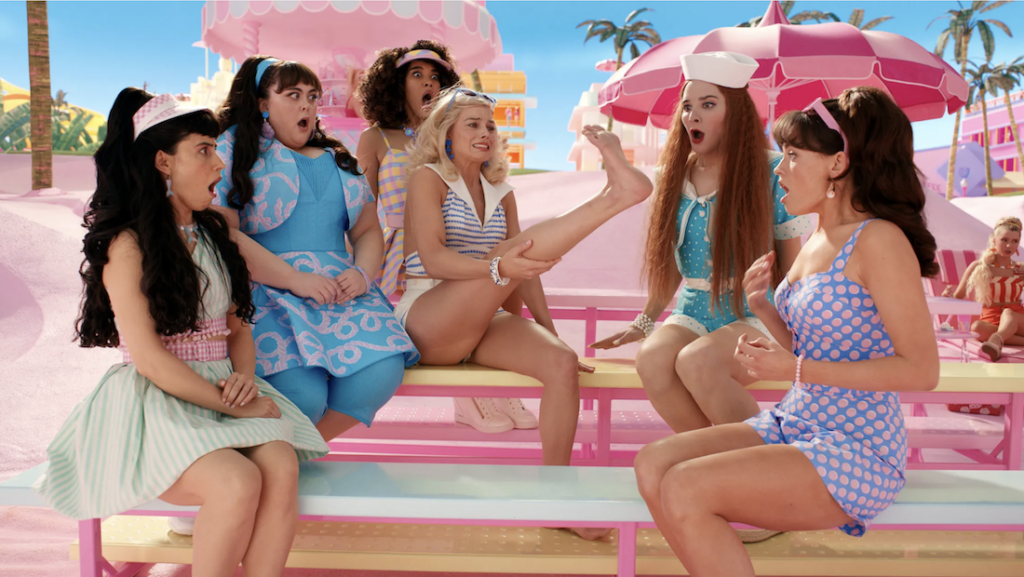
'Barbie' (2023)
The spine of a screenplay, however, is the central narrative that drives the plot and the characters' actions. Think of the spine as the essential backbone that connects all the main events and actions of the characters as they explore and question the theme.
The spine of Barbie is Barbie’s journey to the real world to solve the mystery of why she’s malfunctioning. Dolls aren’t supposed to think about death, so something must be really wrong with Barbie! She thinks that if she can solve that mystery, her fallen arches (and her happiness) will return to their normal state. What she’s not expecting is how difficult and confounding the journey will be – especially to an outsider like her.
The Character Gloria
Gloria is a major ally for Barbie when she gets to the Real World. Gloria serves as a tour guide, helping Barbie navigate this foreign land. Gloria not only works for Mattel (Barbie’s creator) and has that inside knowledge, but she’s also a single mom whose own daughter has given up on Barbie dolls, amplifying the rift between mother and daughter. If Gloria can solve Barbie’s problem (i.e.: Barbie’s malfunction), she can solve her own problem with her daughter (i.e.: their relationship malfunction). This makes Gloria’s character the spine of the film personified.
Gloria’s Monologue
Gloria’s monologue not only hits at the heart of what modern women experience in society today, but it also serves as a battle cry for Barbie. Now in Act 3, Barbie feels defeated because she’s unable to discover the source of her malfunctioning – it’s her “All is lost” moment. She feels doomed to live the life of an unhappy plastic toy forever and never know the beauty and mystery of the human world. But Gloria’s monologue may offer Barbie a light at the end of the tunnel.
Let’s Look At The Opening of the Monologue
“It is literally impossible to be a woman. You are so beautiful and so smart, and it kills me that you don't think you're good enough. Like, we have to always be extraordinary, but somehow we're always doing it wrong.”
Though this doesn’t provide a clear answer to Barbie’s issue of why she’s malfunctioning, it does help her to understand the unfair, prejudiced battle she is fighting. The expectations of real women are totally unrealistic, just like those of a Barbie doll. Finally, some common ground and a clear expression of one of the film’s main themes.

Gloria Goes on to Say:
“You have to be thin, but not too thin. And you can never say you want to be thin. You have to say you want to be healthy, but also you have to be thin. You have to have money, but you can't ask for money because that's crass. You have to be a boss, but you can't be mean. You have to lead, but you can't squash other people's ideas. You're supposed to love being a mother but don't talk about your kids all the damn time. You have to be a career woman but also always be looking out for other people. You have to answer for men's bad behavior, which is insane, but if you point that out, you're accused of complaining. You're supposed to stay pretty for men, but not so pretty that you tempt them too much or that you threaten other women because you're supposed to be a part of the sisterhood. But always stand out and always be grateful. But never forget that the system is rigged. So find a way to acknowledge that but also always be grateful. You have to never get old, never be rude, never show off, never be selfish, never fall down, never fail, never show fear, never get out of line.”
Gloria’s frustration and honesty about all the contradictions women face helps Barbie start to understand that women are expected to walk a tightrope between their real selves and who society thinks they should be. However, this is a tightrope where the walker is doomed to fall off! This is a clear expression of the spine of the film and Barbie’s journey.

Gloria Continues:
“It's too hard! It's too contradictory and nobody gives you a medal or says thank you! And it turns out in fact that not only are you doing everything wrong, but also everything is your fault.”
Ding! That’s exactly what Barbie’s been feeling but didn’t know how to express it! She starts to feel inspired as Gloria sums it all up.
“I'm just so tired of watching myself and every single other woman tie herself into knots so that people will like us. And if all of that is also true for a doll just representing women, then I don't even know.”

America Ferrera in 'Barbie' (2023)
This is the battle cry with the answer Barbie’s been searching for: stop worrying if other people like you because you cannot live up to other people’s expectations. You must accept your true self, flaws and all, despite all the twisted messages society sends you. This is easier said than done of course, but it’s the only way to get through human life.
This truthful, heartfelt monologue causes Barbie to snap out of her gloomy state of mind to see the reality of the situation and discover the solution. They must find the courage to fight unrealistic expectations, stand up to patriarchy and commercialism , and live their authentic, flat-footed lives.
Once the monologue is delivered, Barbie and Gloria can team up to help the other brainwashed Barbies escape the male-dominated world Ken has brought to Barbie Land and discover their own authentic selves.
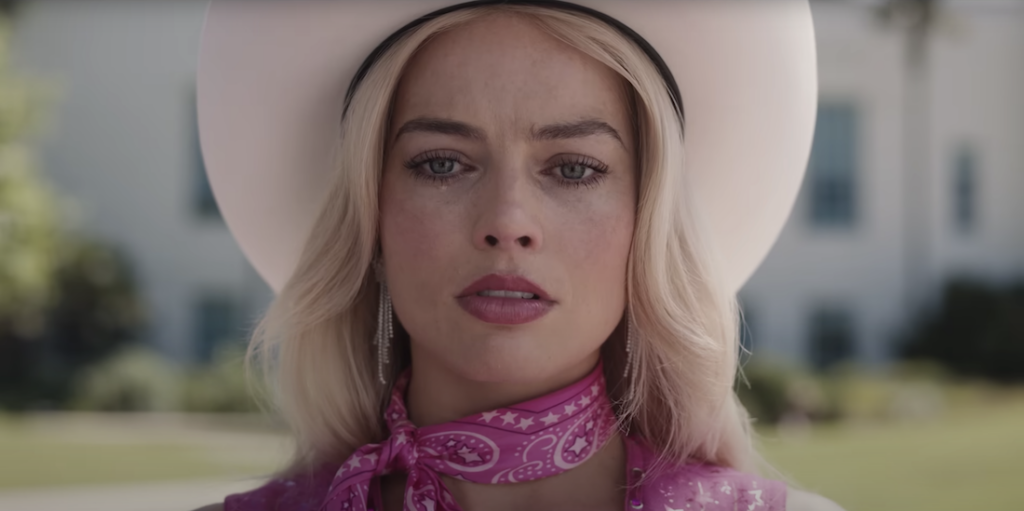
How To Use Monologues in Your Script
This monologue is a tool that allows the main characters (Barbie and Gloria) to find a resolution to their big problems and arc or change. As a screenwriter, determine which character represents the spine of your film and experiment with giving them a third-act monologue. Ask yourself: how does the monologue affect my protagonist? How does it change their trajectory? How does it clear the path to victory?
Monologues don’t have to be put in the third act, they can occur anywhere in the screenplay, but they usually come at an emotional turning point before a plot turning point. The monologue should clarify a character’s feelings to the audience and set in motion the character’s next moves.
Read More: How to Write Memorable and Compelling Monologues

Bottom Line
You may not have room in your screenplay for such a lengthy speech in your script, but just the act of writing the monologue may clarify and focus the story in your own head.
Read More: Barbenheimer: Why Are Barbie and Oppenheimer Battling at the Box Office?
CHECK OUT OUR PREPARATION NOTES SO YOU START YOUR STORY OFF ON THE RIGHT TRACK!

Get Our Screenwriting Newsletter!
Get weekly writing inspiration delivered to your inbox - including industry news, popular articles, and more!
Facebook Comments
Free download.

Screenwriting Resources:

$ 15.00 Original price was: $15.00. $ 12.00 Current price is: $12.00. Add to cart
Popular Posts

Recent Posts
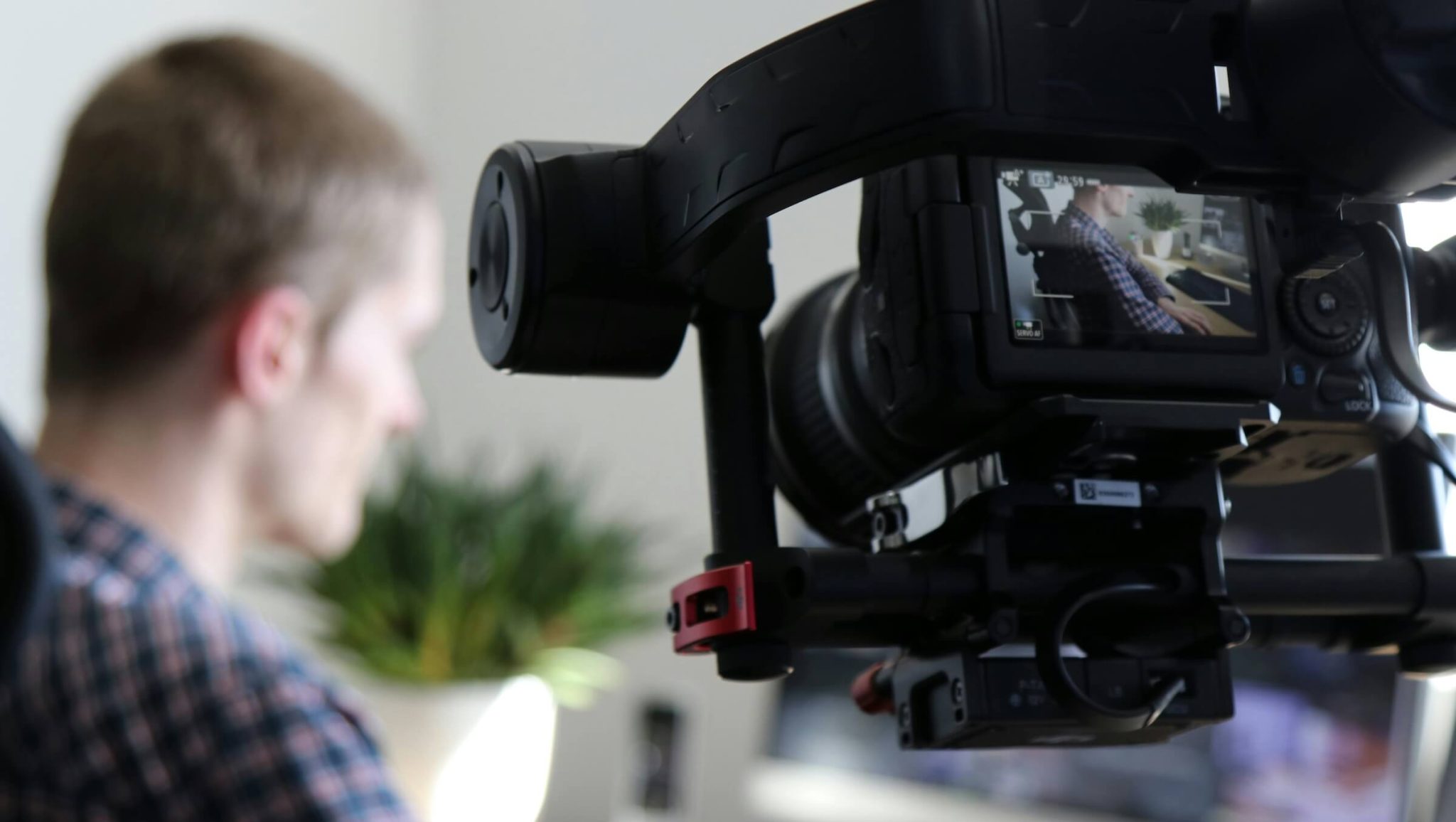
Next Related Post
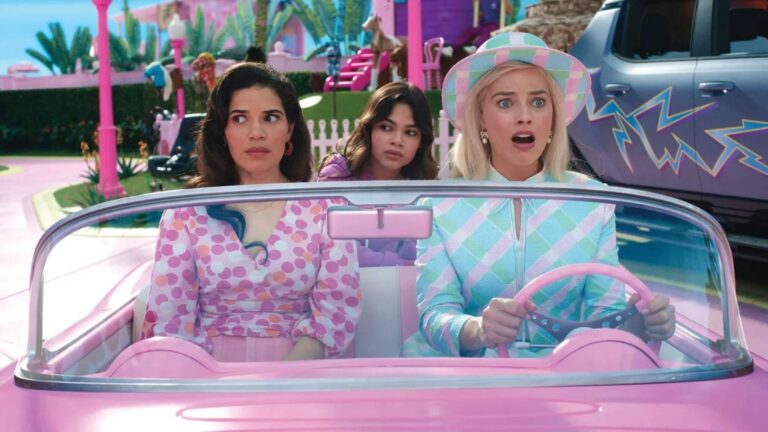
Get Our Newsletter!
Developing your own script.
We'll send you a list of our free eCourses when you subscribe to our newsletter. No strings attached.
You Might Also Like
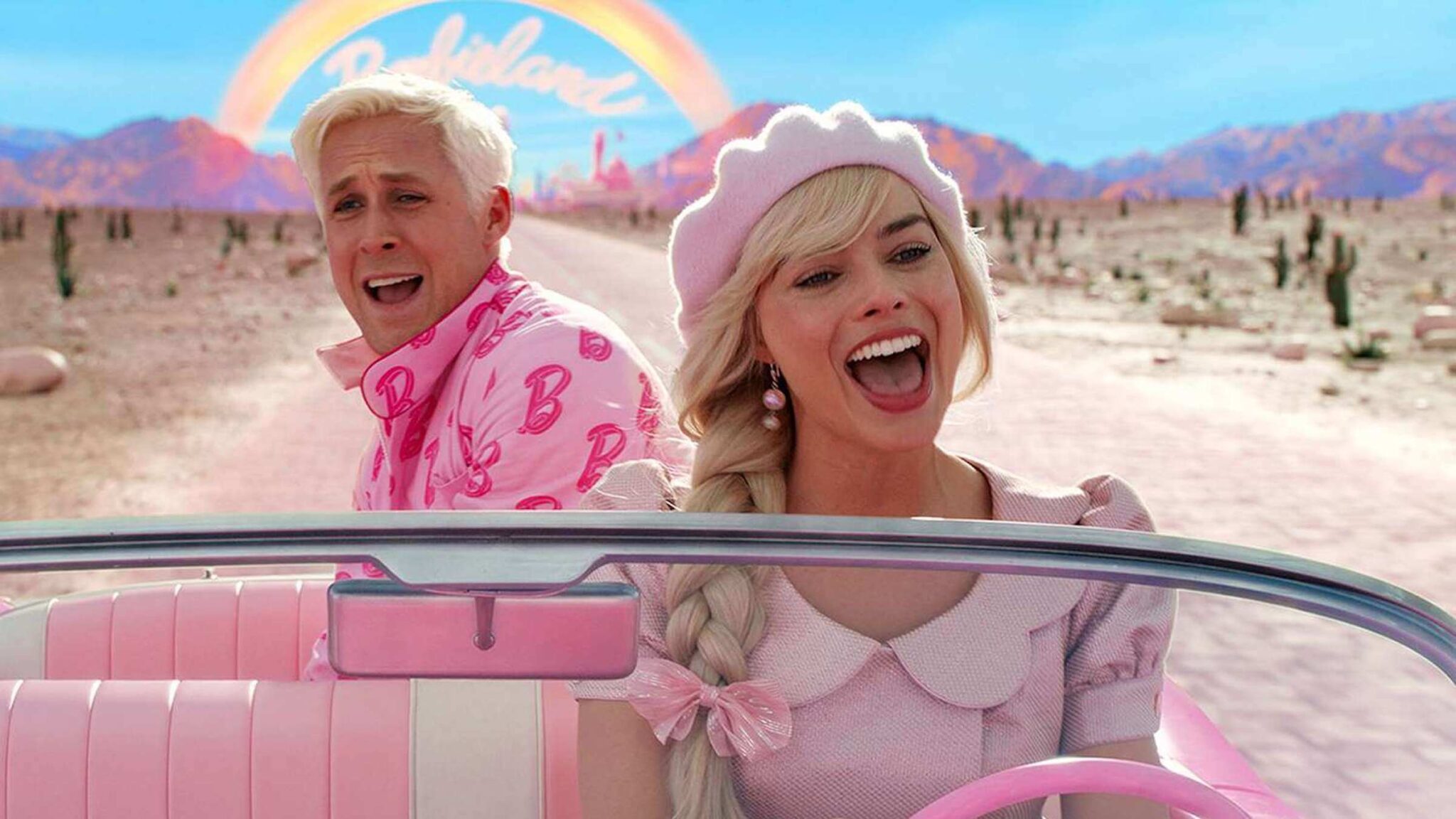
- Hidden Name
- Email This field is for validation purposes and should be left unchanged.
Connect With Us
Writing competitions, success stories.
© 2024 ScreenCraft | An Industry Arts Company
Screenwriting Newsletter
Join our community of over 100,000 screenwriters and get weekly inspiration delivered to your inbox:
✓ Popular blog posts and industry news ✓ New ScreenCraft online events ✓ Screenplay competition announcements!
" * " indicates required fields
- Get the eBooks

Inspire like Braveheart: five keys to a motivating speech
- May 13, 2012 April 18, 2021
- Communication , Influencing
We can all name our favourites: those inspirational mov i e speeches that make our hair stand on end and ready to take on the world. But what is it that gives those speeches their power? And what can leaders learn from them?
In her insightful book, Resonate , Nancy Duarte identifies rhetorical devices which leaders use to create an emotional bond with their audience. Let’s look at how these devices are used in two memorable movie speeches: William Wallace’s address to his troops before the Battle of Stirling in Braveheart , and Aragorn’s speech before the final battle in The Lord of the Rings: Return of the King . You can view the scenes via the YouTube links at the bottom of the page, along with annotated transcripts.
Contrast what is , with what could be
Painting a vision of the future is an effective but under-utilised influencing tool. In Braveheart , Wallace contrasts what is – the immediate possibility of death in battle, with what could be – an unfulfilled life without freedom. Aragorn contrasts a day when ‘the courage of man fails’ with his determination that ‘it is not this day’.
Metaphor/visual words
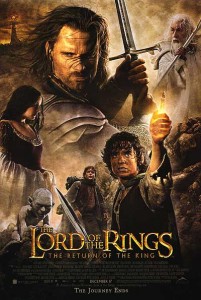
Using colourful, visual language helps to make a leader’s vision come alive, provoking anemotional reaction which changes behaviour. Aragorn’s language is laced with metaphor as he talks of ‘an hour of wolves and shattered shields where the courage of men comes crashing down’.
Repetition is an ancient rhetorical device, simple to use but powerful in impact. Both Wallace and Aragorn use it for emphasis, with Aragorn’s speech centered on his repetition of ‘it is not this day!’ Wallace also uses it to drill home his message that his countrymen’s ‘one chance’ for freedom may never come round again.
Dramatic pause
Varying the tempo of a speech and imbuing it with dramatic pauses helps to increase its impact. Wallace and Aragorn employ both to impressive effect.
Brotherhood and vulnerability
They’re not mentioned by Duarte, but both speeches have two other common characteristics: expressions of family bond, and of the vulnerability of the leader themselves.
Wallace addresses his ‘sons of Scotland’, while Aragorn calls his followers ‘my brothers’. Both create a strong sense of family.
Aragorn and Wallace are also content to show their own vulnerability. Wallace makes light of the myth of his invincibility, while Aragorn admits to seeing in his followers ‘the same fear that would take the heart of me’.
By hinting at their own vulnerability and showing empathy, they’re sending a clear message: if I can overcome my fears, then you can too.
Sons of Scotland! (Metaphor/visual words) (Brotherhood)
I am William Wallace.
Soldier: William Wallace is seven feet tall!
Yes, I’ve heard. Kills men by the hundred! And if he were here, he’d consume the English with fireballs from his eyes, and bolts of lightning from his arse! (Metaphor/visual words)(Vulnerability)
I am William Wallace. And I see a whole army of my countrymen, here in defiance of tyranny. (Metaphor/visual words)
(Dramatic pause)
You’ve come to fight as free men. And free men you are. What will you do with that freedom? Will you fight?
Soldier 2: Fight? Against that? No! We will run. And we will live.
Aye, fight and you may die. Run, and you’ll live. At least a while. (dramatic pause)
And dying in your beds, many years from now, would you be willing to trade all the days from this day to that, ( contrast what is and what could be) for one chance, just one chance, (repetition) to come back here and tell our enemies, that they may take our lives, but they’ll never take our freedom!
Alba gu bra!
I see in your eyes the same fear that would take the heart of me. ( vulnerability )
A day may come when the courage of man fails, when we forsake our friends and break all bonds of fellowship – but it is not this day! ( Metaphor/visual words ) ( brotherhood ) ( contrast what is and what could be )
An hour of wolves and shattered shields when the Age of Men comes crashing down – but it is not this day! This day we fight! ( Metaphor/visual words ) ( repetition ) ( contrast what is and what could be )
By all that you hold dear on this good Earth, I bid you stand, men of the West!
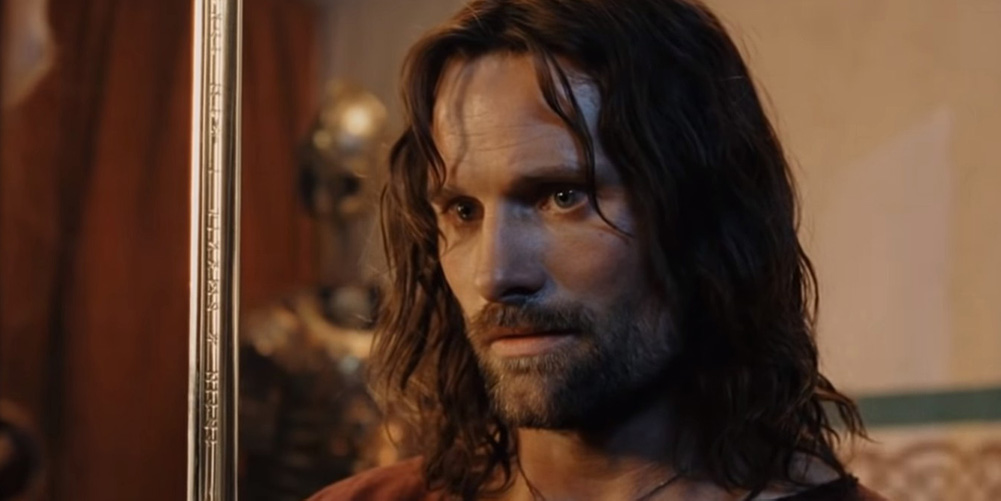
There are many 'good' companies, but few that are 'great'. In leadership terms, what makes the difference? Jim Collins' business Read more
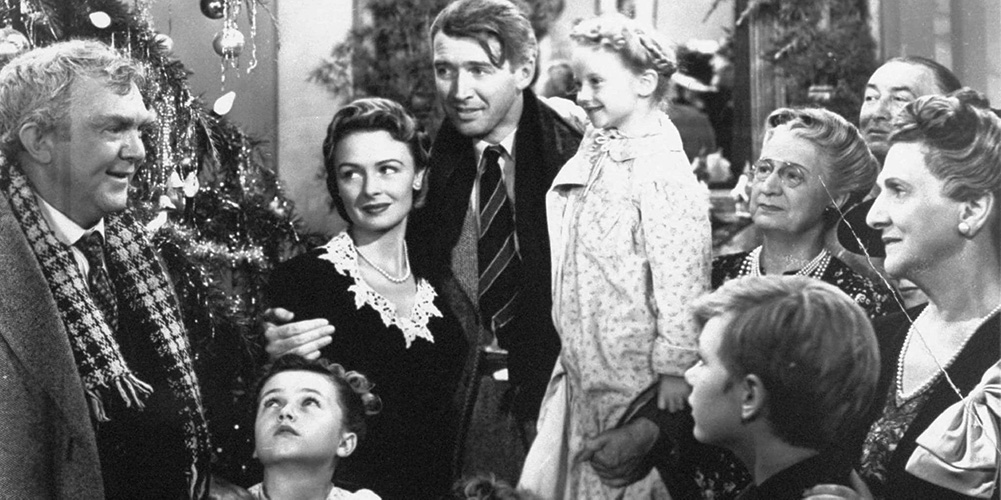
At the start of It's a Wonderful Life, the angels observe George Bailey as he considers jumping off the Bedford Read more
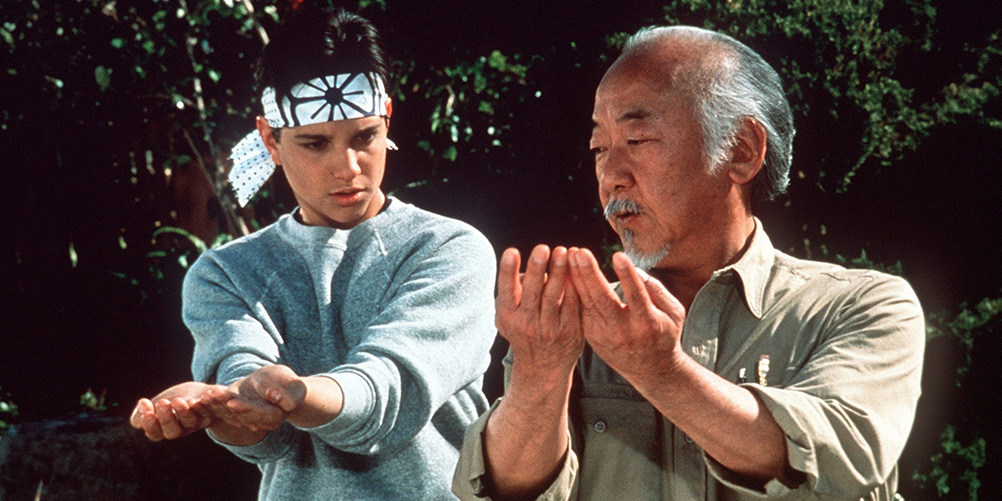
Unlocking the potential of their people is key to any leader's success. So what can we learn from Hollywood’s top Read more
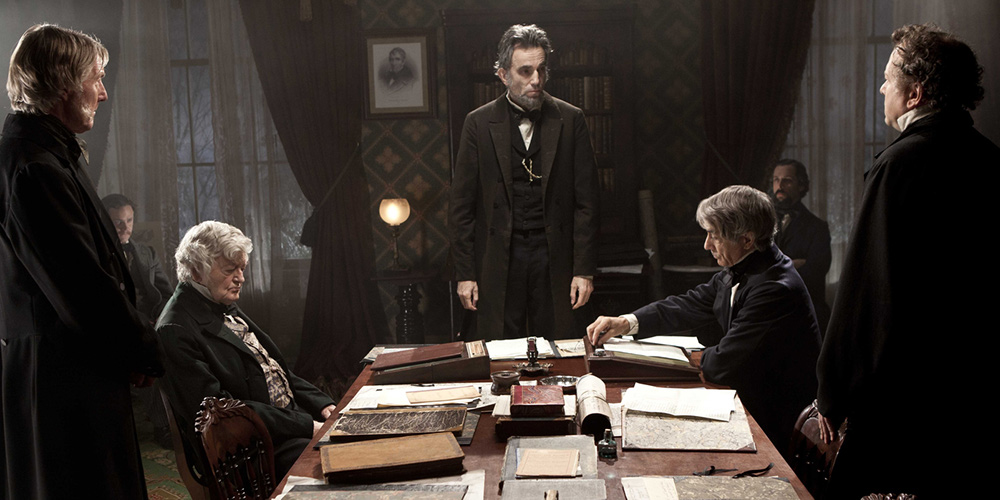
"Everything should be made as simple as possible, but not simpler"Albert Einstein Communicating effectively is surprisingly difficult. In our attention-starved, Read more

"What is it that you actually do?" Apple co-founder Steve Wozniak (Woz) asks in the movie Steve Jobs, after listing Read more
It's good to share...
- Click to share on Twitter (Opens in new window)
- Click to share on LinkedIn (Opens in new window)
- Click to share on Pinterest (Opens in new window)
- Click to share on Facebook (Opens in new window)
- Click to share on Pocket (Opens in new window)
- Click to share on Tumblr (Opens in new window)
- Click to email a link to a friend (Opens in new window)
- Click to print (Opens in new window)
- Click to share on Reddit (Opens in new window)
2 thoughts on “Inspire like Braveheart: five keys to a motivating speech”
This is great and spot on. I’ve always loved both these speeches as they are so inspiring and so full of courage, passion, and HEART! This analysis of the aspects of leadership contained in both speeches helps my understanding of what makes these speeches so powerful. We need more speeches like this in our current lives 🙂
Thanks Sue. It’s amazing how many great speeches do use the same rhetorical devices. But as you say, you still have to deliver them with heart!
Leave a Reply Cancel reply
Your email address will not be published. Required fields are marked *
Save my name, email, and website in this browser for the next time I comment.
Notify me of follow-up comments by email.
Notify me of new posts by email.
31 Useful Rhetorical Devices
What is a rhetorical device and why are they used.
As with all fields of serious and complicated human endeavor (that can be considered variously as an art, a science, a profession, or a hobby), there is a technical vocabulary associated with writing. Rhetoric is the name for the study of writing or speaking as a means of communication or persuasion, and though a writer doesn’t need to know the specific labels for certain writing techniques in order to use them effectively, it is sometimes helpful to have a handy taxonomy for the ways in which words and ideas are arranged. This can help to discuss and isolate ideas that might otherwise become abstract and confusing. As with the word rhetoric itself, many of these rhetorical devices come from Greek.

Ready, set, rhetoric.
The repetition of usually initial consonant sounds in two or more neighboring words or syllables
wild and woolly, threatening throngs
Syntactical inconsistency or incoherence within a sentence especially : a shift in an unfinished sentence from one syntactic construction to another
you really should have—well, what do you expect?
Repetition of a prominent and usually the last word in one phrase or clause at the beginning of the next
rely on his honor—honor such as his?
A literary technique that involves interruption of the chronological sequence of events by interjection of events or scenes of earlier occurrence : flashback
Repetition of a word or expression at the beginning of successive phrases, clauses, sentences, or verses especially for rhetorical or poetic effect
we cannot dedicate—we cannot consecrate—we cannot hallow—this ground
The repetition of a word within a phrase or sentence in which the second occurrence utilizes a different and sometimes contrary meaning from the first
we must all hang together or most assuredly we shall all hang separately
The usually ironic or humorous use of words in senses opposite to the generally accepted meanings
this giant of 3 feet 4 inches
The use of a proper name to designate a member of a class (such as a Solomon for a wise ruler) OR the use of an epithet or title in place of a proper name (such as the Bard for Shakespeare)
The raising of an issue by claiming not to mention it
we won't discuss his past crimes
An expression of real or pretended doubt or uncertainty especially for rhetorical effect
to be, or not to be: that is the question
Harshness in the sound of words or phrases
An inverted relationship between the syntactic elements of parallel phrases
working hard, or hardly working?
A disjunctive conclusion inferred from a single premise
gravitation may act without contact; therefore, either some force may act without contact or gravitation is not a force
The substitution of a disagreeable, offensive, or disparaging expression for an agreeable or inoffensive one
greasy spoon is a dysphemism for the word diner
Repetition of a word or expression at the end of successive phrases, clauses, sentences, or verses especially for rhetorical or poetic effect
of the people, by the people, for the people
Emphatic repetition [ this definition is taken from the 1934 edition of Webster's Unabridged dictionary ]
An interchange of two elements in a phrase or sentence from a more logical to a less logical relationship
you are lost to joy for joy is lost to you
A transposition or inversion of idiomatic word order
judge me by my size, do you?
Extravagant exaggeration
mile-high ice-cream cones
The putting or answering of an objection or argument against the speaker's contention [ this definition is taken from the 1934 edition of Webster's Unabridged dictionary ]
Understatement in which an affirmative is expressed by the negative of the contrary
not a bad singer
The presentation of a thing with underemphasis especially in order to achieve a greater effect : UNDERSTATEMENT
A figure of speech in which a word or phrase literally denoting one kind of object or idea is used in place of another to suggest a likeness or analogy between them ( Metaphor vs. Simile )
drowning in money
A figure of speech consisting of the use of the name of one thing for that of another of which it is an attribute or with which it is associated
crown as used in lands belonging to the crown
The naming of a thing or action by a vocal imitation of the sound associated with it
A combination of contradictory or incongruous words
cruel kindness
The use of more words than those necessary to denote mere sense : REDUNDANCY
I saw it with my own eyes
A figure of speech comparing two unlike things that is often introduced by "like" or "as"
cheeks like roses
The use of a word in the same grammatical relation to two adjacent words in the context with one literal and the other metaphorical in sense
she blew my nose and then she blew my mind
A figure of speech by which a part is put for the whole (such as fifty sail for fifty ships ), the whole for a part (such as society for high society ), the species for the genus (such as cutthroat for assassin ), the genus for the species (such as a creature for a man ), or the name of the material for the thing made (such as boards for stage )
The use of a word to modify or govern two or more words usually in such a manner that it applies to each in a different sense or makes sense with only one
opened the door and her heart to the homeless boy
MORE TO EXPLORE: Rhetorical Devices Used in Pop Songs
Word of the Day
Approbation.
See Definitions and Examples »
Get Word of the Day daily email!
Games & Quizzes

Usage Notes
Prepositions, ending a sentence with, hypercorrections: are you making these 6 common mistakes, a comprehensive guide to forming compounds, can ‘criteria’ ever be singular, singular nonbinary ‘they’: is it ‘they are’ or ‘they is’, grammar & usage, how to use accents and diacritical marks, how to use em dashes (—), en dashes (–) , and hyphens (-), every letter is silent, sometimes: a-z list of examples, plural and possessive names: a guide, the difference between 'i.e.' and 'e.g.', 7 shakespearean insults to make life more interesting, pilfer: how to play and win, 8 words for lesser-known musical instruments, weird words for autumn time, much ado about ‘folie à deux’.
.
, , , , .

What are What Rhetorical Appeals? Ethos, Pathos, & Logos in Film & Advertising

Ethos, Pathos, and Logos are modes of persuasion (rhetorical appeals) used to convince audiences. Ethos refers to the author’s credibility and character, Pathos appeals to the audience’s emotions, and Logos appeals to logic and reason.
The ancient philosopher Aristotle coined the terms ethos, logos, and pathos, which together make up the rhetorical triangle.
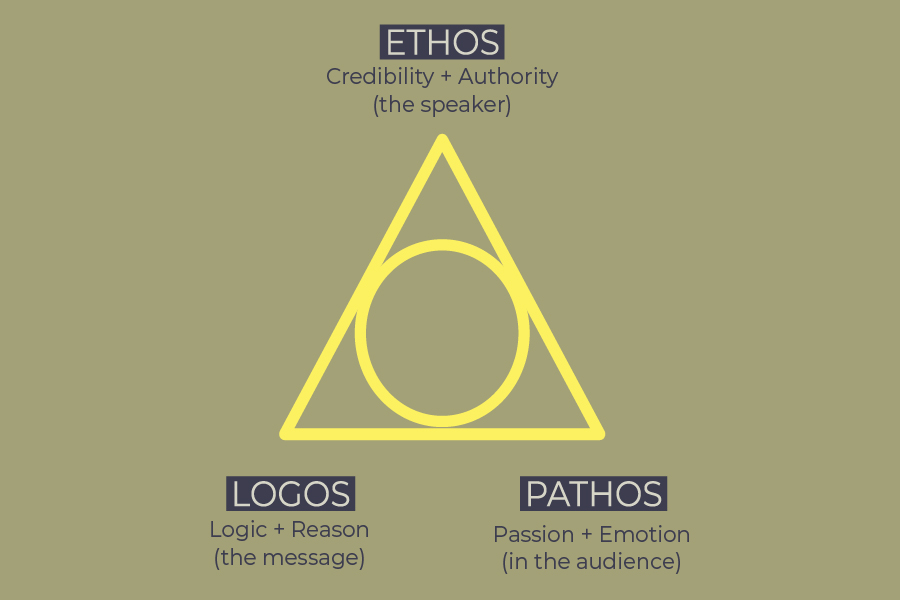
Understanding these concepts is critical to analyzing and crafting compelling arguments, whether in a blockbuster movie ‘s climactic scene or a commercial’s punchy pitch.
In filmmaking, screenwriters can use these appeals to build character traits and drive conflict. Or they can be used to write powerful monologues .
In advertising and communication, these modes of persuasion are used to establish trust, connect with consumers on an emotional level, and drive sales or change logically.
In this article, I’ll explore how storytellers and screenwriters use them to make compelling characters the audience connects with and how this can be used to drive conflict.
I’ll also examine how Ethos, Logos, and Pathos make practical tools for compelling arguments in marketing campaigns, strategic communication, speeches, and sales pitches.

The Greek word Ethos refers to the ethical appeal or the credibility of the speaker (or writer).
It relies on the speaker’s character or writer’s credibility to establish authority and trustworthiness.
When you use ethos, i.e., make an ethical appeal , you seek to establish credibility by knowing a particular subject (extrinsic) or presenting your persuasive argument (intrinsic).
It’s how you, as the presenter, convince your listeners you are qualified to speak on a subject.
Ethos examples in marketing or communication
Advertising frequently leverages these persuasive advertising techniques to influence consumer behavior.
Examples of ethos used in advertising include a brand using a trusted celebrity endorsement.
Picture LeBron James flying across your television, his skill implying a sports drink’s high performance. This is ethos in action.
These tactics use the status of famous figures to increase a brand’s trustworthiness, utilizing ethos for persuasion.
It’s not solely about celebrity influence; expert endorsements associate a product with recognized expertise.
When you purchase sneakers or supplements, you’re not just acquiring an item but partaking in a legacy of excellence.
This strategic approach is deliberate. It aims to engage with you—the innovator, the trendsetter, the early adopter—on a level that goes beyond the average.
You can also act ethos in infomercials about important topics or a documentary featuring a respected expert .
Ethos may change over time.
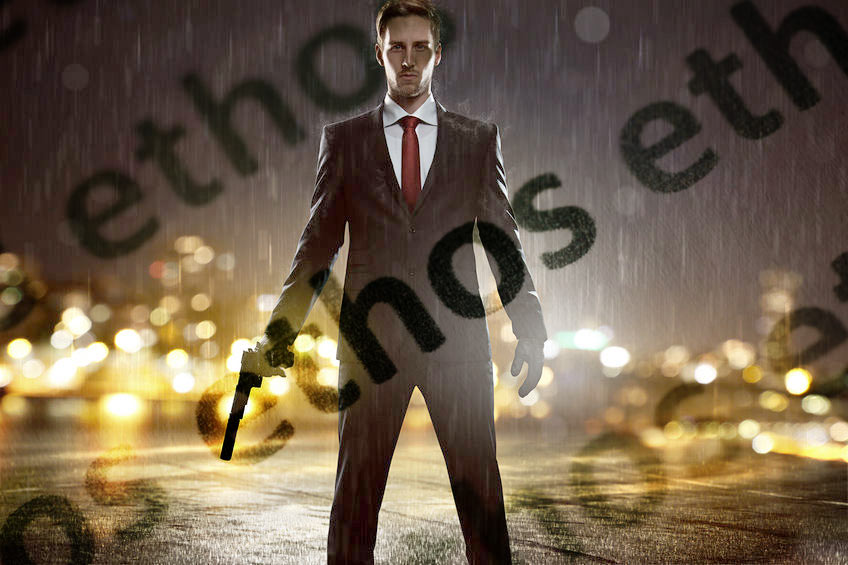
Notice also that ethos is connected to the speaker’s personal character, and how the speaker is perceived may change from one demographic to another or over time.
A politician such as Donald Trump is an excellent example of a controversial figure who is highly trusted by one demographic and distrusted by another.
We see how ethos is valued differently over time when fx a celebrity gets into trouble.
A good example is the Johnny Depp vs Amber Heard trial , which had severe consequences for both celebrities – financially, job-wise, and reputation-wise.
Another example is Will Smith’s slapping Chris Rock at the Oscars , which saw Smith’s popularity decline, projects being put on hold, and has led to a painfully slow recovery of respect in the public eye.
Ethos examples in movies
Ethos can be used in feature films to measure how well a film convinces its audience of the story’s credibility .
For instance, ethos is evident when a character’s backstory reveals their expertise or noble qualities, enhancing their credibility.
A compelling use of ethos can be seen in courtroom dramas or films about great trials, where the integrity and credibility of characters are pivotal.
A character with ethos is Harry Potter , i.e., the offspring of powerful wizard parents, which helps establish his credibility as a powerful wizard from the beginning of the story.
Throughout the series, he consistently does “the right thing,” meaning he always makes the ethical choice.
Logos represent logical appeal. This involves constructing logical arguments with clear, rational ideas and common sense, often employing deductive or inductive reasoning .
Logos appeals hinge on presenting a logical conclusion that makes sense to the audience, steering clear of logical fallacies.
Logos appeals to a listener’s logical reasoning , usually by incorporating supporting facts and figures to support the claim.
Logos harnesses the power of evidence to construct an unassailable case for why you need that gadget, service, or innovation.
It’s the backbone of a strategy aiming to engage your intellect , not just your emotions.
When wielded effectively, logos transforms complex data into clear, actionable insights, effectively guiding your decision-making process.
Logos examples in marketing or communication
Logos frequently appear in advertising, utilizing hard data and rational arguments to persuade you of a product’s value.
In the era of data-driven marketing, persuasive statistics serve as a central component.
These aren’t mere numbers; they tell compelling stories through data that appeal to your logical thinking.
Imagine an ad for a data-driven solution for digital transformation in a large corporation. In such a campaign, logic and facts are important to convince decision-makers to buy the product.
Logos appeals in advertising are visible in ads that present logical arguments or statistics to validate a product’s effectiveness.
Advertisements for medications , for example, might include scientific data or logical explanations of how the drug works as a means of persuasion.
Or picture a new gadget with better specs than the competition.
If you want to compete on specs, raw data is a powerful tool.
Logos examples in movies
In film, Logos is the presence of story logic .
Story logic connects each beat of the story to flow naturally to the next so the viewer can draw conclusions and determine that everything makes sense according to the story’s world.
Logos is also used in films that hinge on strong arguments, where the narrative leads the audience to a logical conclusion through literal analogies and open-ended questions.
A movie featuring a detective piecing together clues showcases logos by guiding the audience through deductive reasoning.
A good example from the feature film is Harry Potter’s friend Hermione Granger , who embodies logos. She’s the brains and the perfect student, and she approaches magic with logic and reason.
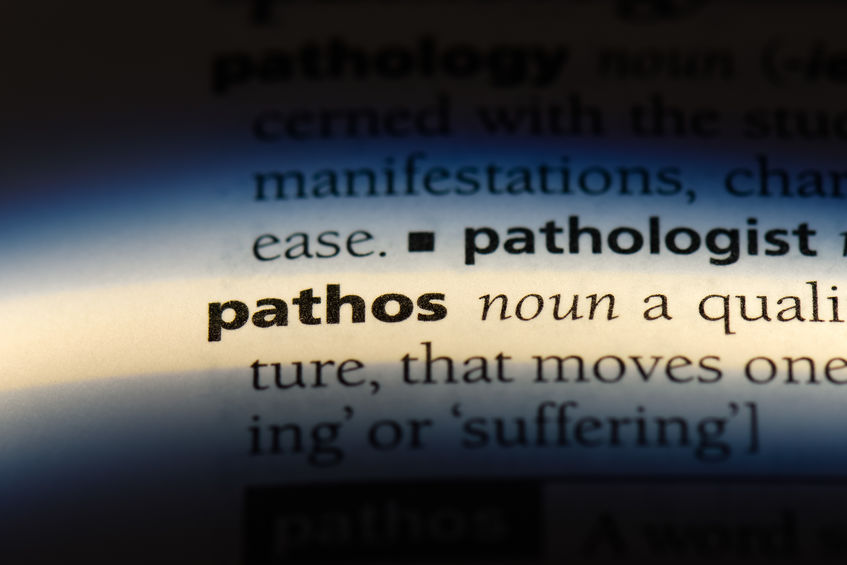
Pathos is the emotional appeal, targeting the audience’s emotions. The word Pathos means suffering or experience.
The common use of pathos can be seen in commercials that associate products with positive emotions or societal ideals , such as a sense of belonging or happiness.
Pathos appeals leverage emotional response through meaningful language and emotional tone and sometimes evoke empathy with powerful imagery.
Examples of Pathos in marketing or communication
Modern commercials use pathos to captivate your emotions, creating a memorable association with the brand.
These ads tell stories that stir your deepest emotions , making you feel more than just a viewer.
The most effective commercials elicit a true emotional reaction, motivating you to act, share, and stay loyal.
Brands excel in crafting empathy , allowing you to see parts of your own life in their stories.
This connection elevates a simple product to an indispensable part of your life.
Pathos is not solely about emotion; it’s about establishing a memorable link between you and the brand.
Examples of Pathos in movies
Pathos is often the driving force in filmmaking, stirring strong emotional responses through storytelling.
A poignant example is the use of climate change imagery in documentaries, which creates a powerful emotional appeal to spur viewers into action.
In feature films, pathos measures how well the film persuades the audience to invest their emotions in the story’s world.
Harry’s friend, Ron Weasley, embodies pathos in their friendship triangle in Harry Potter. He is passionate and always there for Harry.
Ron is funny, brave, insecure, immature, and jealous. His love and feelings for Hermione are often not mirrored by Hermione, who is both more mature and rational.
Combining Ethos, Logos, and Pathos in marketing and communication
Combining ethos, logos, and pathos is an effective strategy for making effective arguments.
An example of Pathos in a strategic communication campaign is a TV spot with a family involved in a horrible car accident due to speeding.
This is a good example as it utilizes all three rhetorical appeals. The sender (a government entity) wants drivers to slow down ethically.
Pathos invokes negative emotions such as disgust, anger, fear, and maybe even guilt.
This may lead to the logical conclusion (my family might get hurt, or I might hurt somebody) that it’s better to make the ethical choice to slow down, thus driving change.
Combining Ethos, Logos, and Pathos in Film
Film directors, authors, and screenwriters masterfully employ these methods of persuasion to engage viewers and drive conflict.
Many conflicts between Harry Potter, Hermione Granger, and Ron Weasley are driven by their character traits based on the three rhetorical appeals.
Take, for instance, the conflict between Ron and Hermione over Scabbers and Crookshanks.
Ron accuses (Pathos) Hermione’s cat Crookshanks of being responsible for the deteriorating health of his rat Scabbers, while Hermione argues (Logos) why this isn’t the case.
Their emotions run high over this issue, resulting in a period of cease-communication for several weeks, with Harry (Ethos) intervening in an attempt to reconcile them.
Closing Thoughts
Ethos, pathos, and logos remain critical tools in the arsenal of modern storytellers, from filmmakers to advertisers.
By harnessing ethical, emotional, and logical appeals, creators can craft messages that resonate deeply with their audiences.
As we navigate a world saturated with messages vying for our attention, the ability to discern and employ these persuasive techniques becomes increasingly valuable.
Up Next: What is Characterization?

By Grant Harvey
Grant Harvey is a freelance writer, screenwriter, and filmmaker based out of Los Angeles. When he’s not working on his own feature-length screenplays and television pilots, Grant uses his passion and experience in film and videography to help others learn the tools, strategies, and equipment needed to create high-quality videos as a filmmaker of any skill level.
This is verrry useful and helpful for I havent a clue how to work my film analysis around this trio. Thanks heaps.
We’re glad to hear you found it useful. Good luck with the analysis 🙂
It was somewhat helpful, but I still learning the data
Is there something, you want me to elaborate on to help you?
Leave a comment Cancel reply
Your email address will not be published. Required fields are marked *
This site uses Akismet to reduce spam. Learn how your comment data is processed .
Rhetorical Analysis of Nelson Mandela’s Speech
How it works
Nelson Mandela was a big deal in the fight against apartheid in South Africa. He gave a ton of speeches that people still talk about today. One of the most famous ones was his inaugural address on May 10, 1994. This speech wasn’t just about politics; it was about hope and bringing people together. Mandela used a mix of credibility, emotions, and logic to make his speech timeless.
- 1 Ethos: Building Trust with Personal and Historical Context
- 2 Pathos: Stirring Emotions for Unity and Hope
- 3 Logos: Laying Out a Clear and Logical Vision
- 4 The Power of Language and Symbolism
- 5 Conclusion
Ethos: Building Trust with Personal and Historical Context
Mandela’s credibility, or ethos, came from his past.
He spent 27 years in prison for fighting against apartheid, but he came out not angry, but ready to unite the country. When he said, “I stand here before you not as a prophet but as a humble servant of you, the people,” it showed he was sincere and committed. This made people trust him as a leader.
He also talked about South Africa’s past struggles for freedom and justice, tying himself to the hopes and fights of many. By referencing past leaders and the collective fight against oppression, he brought everyone together under a shared history and purpose.
Pathos: Stirring Emotions for Unity and Hope
Mandela was great at using emotions, or pathos, to bring people together. He talked about the pain people had gone through but also painted a hopeful future. He said, “We have, at last, achieved our political emancipation. We pledge ourselves to liberate all our people from the continuing bondage of poverty, deprivation, suffering, gender and other discrimination.” This mix of acknowledging past pain and promising a better future really hit home for many.
He used vivid imagery too. Calling the day a “day of celebration for all South Africans” made everyone feel joyful and triumphant. His inclusive language helped break down barriers and foster a sense of national unity.
Logos: Laying Out a Clear and Logical Vision
While Mandela’s speech was full of emotion and ethical appeals, it also had solid logical arguments, or logos. He talked about the principles that would guide the nation, like democracy, justice, and equality. He said, “The time for the healing of the wounds has come. The moment to bridge the chasms that divide us has come.” This logical progression from past division to future unity made sense to everyone.
He also outlined specific goals like ending poverty and boosting the economy. By presenting a clear and coherent vision, he addressed the intellectual concerns of his audience, giving them a roadmap for the future.
The Power of Language and Symbolism
Mandela’s speech is a lesson in the power of language and symbolism. He chose his words carefully to create specific images and emotions. Words like “celebration,” “emancipation,” and “liberate” were full of positive vibes, reinforcing themes of freedom and unity. His use of inclusive language, like “we” and “our people,” helped create a sense of collective identity.
Symbolism was also key. Calling South Africa a “rainbow nation” was a powerful metaphor for diversity and unity. This kind of symbolic language not only captured people’s imaginations but also provided a vision that crossed racial and cultural lines.
Nelson Mandela’s inaugural speech isn’t just a piece of history; it’s a timeless masterpiece. By balancing credibility, emotions, and logic, Mandela addressed the immediate concerns of his audience while laying the groundwork for a unified and prosperous future. His skillful use of language and symbolism turned the speech into a beacon of hope and reconciliation.
In times when divisive rhetoric is common, Mandela’s speech is a powerful reminder of the unifying power of words. It shows how a single speech can shape a nation’s destiny and inspire generations to come.
Cite this page
Rhetorical Analysis of Nelson Mandela's Speech. (2024, Sep 17). Retrieved from https://papersowl.com/examples/rhetorical-analysis-of-nelson-mandelas-speech/
"Rhetorical Analysis of Nelson Mandela's Speech." PapersOwl.com , 17 Sep 2024, https://papersowl.com/examples/rhetorical-analysis-of-nelson-mandelas-speech/
PapersOwl.com. (2024). Rhetorical Analysis of Nelson Mandela's Speech . [Online]. Available at: https://papersowl.com/examples/rhetorical-analysis-of-nelson-mandelas-speech/ [Accessed: 19 Sep. 2024]
"Rhetorical Analysis of Nelson Mandela's Speech." PapersOwl.com, Sep 17, 2024. Accessed September 19, 2024. https://papersowl.com/examples/rhetorical-analysis-of-nelson-mandelas-speech/
"Rhetorical Analysis of Nelson Mandela's Speech," PapersOwl.com , 17-Sep-2024. [Online]. Available: https://papersowl.com/examples/rhetorical-analysis-of-nelson-mandelas-speech/. [Accessed: 19-Sep-2024]
PapersOwl.com. (2024). Rhetorical Analysis of Nelson Mandela's Speech . [Online]. Available at: https://papersowl.com/examples/rhetorical-analysis-of-nelson-mandelas-speech/ [Accessed: 19-Sep-2024]
Don't let plagiarism ruin your grade
Hire a writer to get a unique paper crafted to your needs.

Our writers will help you fix any mistakes and get an A+!
Please check your inbox.
You can order an original essay written according to your instructions.
Trusted by over 1 million students worldwide
1. Tell Us Your Requirements
2. Pick your perfect writer
3. Get Your Paper and Pay
Hi! I'm Amy, your personal assistant!
Don't know where to start? Give me your paper requirements and I connect you to an academic expert.
short deadlines
100% Plagiarism-Free
Certified writers
|
| ||
|
| ||
|
| ||
|
| ||

137 leading scholars of American public address were asked to recommend speeches on the basis of social and political impact, and rhetorical artistry. See this news release about the top 100 speeches list for more information.
IMAGES
VIDEO
COMMENTS
Click on the graphic below for my Movie Speech Rhetorical Analysis Resource. Coach Brooks Addresses the US Hockey Team "Miracle" 2004. Powerful sports speeches are always a great asset to rhetoric units. Heavy with pathos, this speech uses repetition and anastrophe to grab the attention of the players before they begin an Olympic championship.
Rhetorical analysis is a skill that needs practice and reinforcement all year long. Using various moments from movies and film offer a great chance to examine both the rhetorical situation and the arguments themselves. Check out these eleven movie suggestions to teach rhetorical analysis including various Disney movies, The Notebook, and We Are ...
Teaching rhetorical analysis is one of my absolute favorite units to complete with my students. I love teaching my students about rhetorical strategies and devices, analyzing what makes an effective and persuasive argument, and reading critical speeches with my students. Here is a quick list of some of my favorite speeches for rhetorical analysis.
Speech Bank: Top 100 Speeches: Great New Speeches: Obama Speeches: GWB Speeches: Movie Speeches: Rhetorical Figures: Christian Rhetoric: 9/11 Speeches: News and Research: For Scholars: Rhetoric Defined: Corax v. Tisias: Plato on Rhetoric: Aristotle on Rhetoric: Comm Journals: Comm Associations: Cool Exercises: Rodman & de Ref: Speech Quiz #1 ...
Movie speeches have a way of seeping into our collective consciousness as a society, and people often quote recognizable snippets from cinema in conversation in order to sum up their feelings or provide relatable wisdom in a variety of contexts. ... 17 rhetorical devices that will make you sound like Steve Jobs.
Speech Bank: Top 100 Speeches: Great New Speeches: Obama Speeches: GWB Speeches: Movie Speeches: Rhetorical Figures: Christian Rhetoric: 9/11 Speeches: News and Research: For Scholars: Rhetoric Defined: Corax v. Tisias: Plato on Rhetoric: Aristotle on Rhetoric: Comm Journals: Comm Associations: Cool Exercises: Rodman & de Ref: Speech Quiz #1 ...
Full text and audio mp3 of movie speech To Kill A Mockingbird - Atticus Finch Closing Argument in the Trial of Tom Robinson
Try beginning your rhetorical analysis lessons by focusing on the rhetorical situation before heading into deeper analysis. When you're ready, dig in using SPACE CAT and a great song from a musical that has a premise and an argument to examine. Here's what we've done in my class using "Mother Knows Best" from Tangled.
America Ferrera in 'Barbie' (2023) This is the battle cry with the answer Barbie's been searching for: stop worrying if other people like you because you cannot live up to other people's expectations. You must accept your true self, flaws and all, despite all the twisted messages society sends you. This is easier said than done of course ...
In her insightful book, Resonate, Nancy Duarte identifies rhetorical devices which leaders use to create an emotional bond with their audience. Let's look at how these devices are used in two memorable movie speeches: William Wallace's address to his troops before the Battle of Stirling in Braveheart , and Aragorn's speech before the ...
An expression of real or pretended doubt or uncertainty especially for rhetorical effect. to be, or not to be: that is the question. cacophony | see definition ». Harshness in the sound of words or phrases. chiasmus | see definition ». An inverted relationship between the syntactic elements of parallel phrases.
Rhetoric, according to Aristotle, is the art of seeing the available means of persuasion. Today we apply it to any form of communication. Aristotle focused on oration, though, and he described three types of persuasive speech. Forensic, or judicial, rhetoric establishes facts and judgments about the past, similar to detectives at a crime scene.
Ethos, Pathos, and Logos are modes of persuasion (rhetorical appeals) used to convince audiences. Ethos refers to the author's credibility and character, Pathos appeals to the audience's emotions, and Logos appeals to logic and reason. . The terms ethos, logos, and pathos were coined by the ancient philosopher Aristotle.
Diana's Last Monologue from Wonder Woman. ~ 7 movie speeches that focus on 25 different Rhetorical Devices: The U.S President's Speech from Armageddon. Ian Malcolm's monologue from Jurassic Park. Bane's monologue from The Dark Night Rises. The President's speech from Independence Day. Queen Gorgo's speech from 300.
Fortunately, this 5-6 week Rhetorical Analysis Unit Bundle represents 21st Century learning at its best! Students will participate in a variety of analysis activities: from analyzing historical speeches and. 5. Products. $15.99Price $15.99$23.22Original Price $23.22Save $7.23. View Bundle.
Rhetorical Devices, Ethos, Logos, and Pathos, are the bones of any persuasive argument.These task cards, which are perfect for stations or gallery walks, will help your students identify and analyze Ethos, Pathos, and Logos in context.This resource provides 39 cards, 13 of each Ethos, Logos, and Pathos, as well as a printable chart for students to record their learning.
F or each rhetorical device, definitions and examples (text, audio, video) are provided. Audio and video examples are taken from public speeches and sermons, movies, songs, lectures, oral interpretations of literature, and other media events. S ome artifacts have been edited further to make the devices easier to detect.
His skillful use of language and symbolism turned the speech into a beacon of hope and reconciliation. In times when divisive rhetoric is common, Mandela's speech is a powerful reminder of the unifying power of words. It shows how a single speech can shape a nation's destiny and inspire generations to come.
This fun rhetoric bundle includes fun and engaging rhetorical analysis practice worksheets (rhetorical devices and appeals) for 13 different cinematic movie speeches.Most of the time, a rhetoric unit can become boring and irrelevant for advanced middle or high school students, who beg to have real-world application for certain analysis skills.
Speech Bank: Top 100 Speeches: Great New Speeches: Obama Speeches: GWB Speeches: Movie Speeches: Rhetorical Figures: Christian Rhetoric: 9/11 Speeches: News and Research: For Scholars: Rhetoric Defined: Corax v. Tisias: Plato on Rhetoric: Aristotle on Rhetoric: Comm Journals: Comm Associations: Cool Exercises: Rodman & de Ref: Speech Quiz #1 ...
At least 32 people, including two children, were killed and thousands more injured, many seriously, after communication devices, some used by the armed group Hezbollah, dramatically exploded ...
The devices were readily available online on Thursday. At least two vendors on Taobao, a Chinese e-commerce marketplace, were selling what they said were Icom IC-V82 walkie-talkies, one for $32 ...
Audio mp3 delivered by Bill Pullman. The President: Good morning. In less than an hour, aircraft from here will join others from around the world. And you will be launching the largest aerial battle in this history of mankind. Mankind -- that word should have new meaning for all of us today. We can't be consumed by our petty differences anymore.
Sep 17, 2024 Sep 17, 2024 Updated 14 hrs ago 0 ...
23. Products. $74.99 $109.70 Save $34.71. View Bundle. Rhetorical Devices & Appeals Movie Speeches Bundle Rhetoric Analysis Activities. This fun rhetoric bundle includes fun and engaging rhetorical analysis practice worksheets (rhetorical devices and appeals) for 13 different cinematic movie speeches.
THE TOP 100 SPEECHES is an index to and substantial database of full text transcriptions of the 100 most significant American political speeches of the 20th century, according to a list compiled by Professors Stephen E. Lucas and Martin J. Medhurst.Dr. Lucas is Evjue-Bascom Professor in the Humanities and Professor of Communication Arts at the University of Wisconsin at Madison.